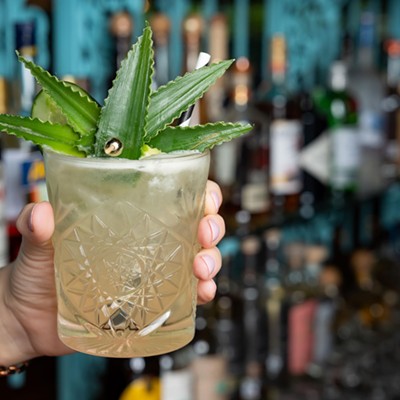We enjoy the occasional pint and, like much of America, have taken an interest in craft beer ever since we could afford (and thus appreciate) it. While I like to simply imbibe my beers, my husband enjoys discussing the various flavors and styles of beer. "What if," he asked, "we could make the perfect beer?"
The dream of cranking craft beer out of our guest bedroom-turned-super-microbrewery took a step toward reality after my brother-in-law gifted us a homebrew kit last Christmas. Needless to say, we were intimidated by the daunting task of homebrewing and did not open the kit for half a year. But after seeing friends brew their own beer, we decided what the heck -- super-microbrewery, here we come.
As with most things in life, the initial experience didn't turn out as expected. There are lots of errors made, lots of lessons to be learned. Here are the five things we learned during our first homebrewing experience. Read on, and save yourself a headache should you ever attempt homebrewing.
5. DON'T start the brewing process at eleven at night.
...unless you are a nocturnal creature. The processes of preparing bottles, cooking ingredients, cooling the wort, and siphoning into the carboy can take several hours, especially if you're ambitious like us and decide to employ the entire five-gallon capacity of the carboy. It takes several, painful hours to cool the wort if you are using a rudimentary method like we did; that is, placing it in an ice bath in our tub. The wort needs to be cooled below 85°F in order for the yeast to do its job, so to go from boiling to below 85°F, the wort will have to drop more than 100 degrees. Watching wort cool is far worse than waiting for water to boil--it takes up much more time if using the ice bath method for five gallons--so I advise setting aside half a day to brew your beer and not waiting till eleven at night when you're bored and deciding suddenly that brewing beer will result in an hour or two of fun. We made that mistake, and by dawn, we were cranky and snapping at each other: "Whose great idea was it to start brewing at eleven anyway?"
Consider buying a wort chiller. If you prefer not to spend hours of your weekend watching the wort cool at a snail's pace, it might make sense to invest in a wort chiller. Wort chillers quicken the cooling process of the wort, improving the beer's clarity while reducing the chances of contamination and off-tasting beer. You can find some for as little as the price of five six-packs of craft beers. Forgo 30 beers, but save three hours of cooling time.
4. DON'T underestimate the importance of climate control.
A proper thermometer is necessary so you'll know when the wort has cooled to the desired temperature to begin fermentation. Adhesive thermometers work well--just peel and stick to the carboy, and you've got instant temperature readings.
Depending on which sort of beer you're trying to make, the wort needs to remain at a stable, cool temperature during fermentation. Lagers require a fermenting temperature between 45 and 55°F, while ales ferment somewhere between 68 and 72°F. If you plan to brew during the summer, make sure you place your carboy in the darkest, coolest section of your house (e.g. the same closet in which you hide your skeletons). Otherwise, plan to invest in a converted mini fridge.





